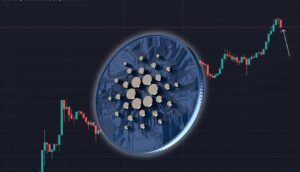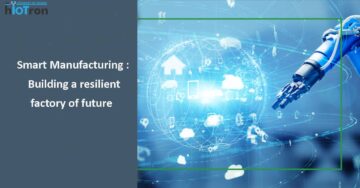
Since COVID-19 has transformed the economic landscape for the destined future and there are several questions about how to safely and efficiently respond to it. The necessity for business continuity has driven many industries to embrace the work-from-home model. Whereas, in some departments and for some roles, work from home is not a suitable option. Businesses have become more advanced in their utilization of technology and companies are now flexible as well as quick to embrace and respond to change.
The focus has changed to the integration of data and digitization of operations to give end-to-end visibility that will need collaborative environments with several stakeholders and data sharing across the value chain. And this is where IoT has moved in. A report entitled – IoT Spotlight 2020 by Vodafone Business, which relies on a survey of over 1,600 businesses has disclosed that COVID-19 has accelerated the plans of 73% of businesses that were formerly considering adopting IoT technologies. Businesses have applied automation and connectivity in the form of IoT to resolve uncertain events in the future.
Here we enlist the significant considerations about how to seamlessly move from in-person process monitoring to remote monitoring if we have to resume work with a definite amount of isolation for the foreseeable future.
Navigating the Crisis with Industrial IoT and Remote Monitoring
As organizations do their best to remain efficient throughout the COVID-19 crisis, business owners are thinking about what IIoT tools are available to assure they’re operationally efficient while following the health and safety regulations.
One of the ways industries can benefit from IIoT as they traverse the pandemic is for workforce tracking as well as monitoring. The utilization of smart devices enabled to read out machine data and key production indicators minimize the traffic on the shop floor. The most important use case of IIoT to help companies operate more effectively and save money during the COVID-19 crisis is predictive maintenance, with the help of advanced analytics it is easy to recognize when machines will fail by utilizing past data.
Having an IoT device that can alert employees when a piece of equipment is about to fail intercepts the production of these scrap parts, greatly minimizing waste and cost. Oil and gas is one industry that always needs optimization. Because their revenue is heavily relying on the price of the market, they don’t get to control that. But what they do get to control is how they can generate and how they can reduce the cost of production. With the help of predictive maintenance, it is easy to do that.
Since maintenance needs a large expense for oil and gas companies, they are using industrial devices to make sure that they go from regular maintenance where they have to close everything down for several months to do all the maintenance to predictive maintenance to fixing things before they break. This will not only minimizing cost but also improve efficiencies.
Maintaining Factory Efficiency in a Pandemic through Remote Monitoring
An essential part of any remote monitoring program is the collection and analysis of data altogether. Displaying analytics on the manufacturing shop floor has huge benefits that eventually help in increasing manufacturing performance. Installing data collection systems is the first step to initiating a remote monitoring strategy that will analyze what is happening on the production line and informs engineers working over there.
Here also, the utilization of IoT and smart devices which present as human-machine interfaces support data collection. The IoT platform then gives the computing resources required to process collected machine data and compare them with optimal machine performance data.
The benchmark data and optimal performance data allow remote teams or managers to constantly recognize challenges within the shop floor. The steady collection of data also makes it feasible to track the effectiveness of social distancing and the shift policies manufacturers put in place to reduce exposure. This data provides managers with the actionable intelligence required to maintain production efficiency levels while assuring operators work in a safe space.
Combining machine data into ERP and MES platforms also assists with optimizing production efficiency via remote monitoring. MES and ERP platforms with precise inventory lists and customer orders can be considered against current production capacity to discover the quantity of output that is achievable within certain time frames. This process and machine data also make it possible for manufacturers to interpret their production capacities.
Using IoT Analytics to Increase Efficiency
IIoT technologies also provide detailed analytics that assists companies to monitor several assets, monitors multiple metrics at once and gain insight into processes’ performance and improvement opportunities.
With the help of Industry 4.0 solutions, industries can analyze equipment and processes as well as set thresholds and alarms remotely. With the precise tools, operator instructions can be sent automatically. In addition to that, by utilizing sensors at the line, vendors can handle their inventory more safely by responding to calls only, removing excessive time spent monitoring or moving around the warehouse looking for goods that require to be refilled. So industrial IoT supports companies to provide that remote access and it assists with automation to help take higher control over inventory.
With real-time data IoT analytics, inventory levels can be quickly tracked and predicted as production is occurring. These technologies minimize variability and errors in the movement of materials. This can significantly minimize inventory costs and contribute towards lean operations.
After the crisis ends, organizations can accelerate a return to normal operations, in part by implementing IIoT to provide employees with remote access and control of several machines. The companies that are capable to pivot and embrace IoT technology precisely, will be capable to remain efficient, productive and enabled to build the highest quality products possible even in the face of crises.
For industries that are trying to minimize costs, improve productivity and use remote abilities as social distancing requirements, IoT remote monitoring abilities have become keystone technologies.
- access
- All
- analysis
- analytics
- around
- Assets
- Automation
- Benchmark
- BEST
- build
- business
- business continuity
- businesses
- Capacity
- change
- Companies
- computing
- Connectivity
- Costs
- COVID-19
- COVID-19 Crisis
- crisis
- Current
- data
- data sharing
- Devices
- digitization
- driven
- Economic
- efficiency
- employees
- ends
- Engineers
- equipment
- events
- Face
- factory
- First
- Focus
- form
- future
- GAS
- goods
- Health
- Home
- How
- How To
- HTTPS
- huge
- Increase
- industrial
- Industrial IoT
- industries
- industry
- integration
- Intelligence
- inventory
- iot
- IoT Device
- isolation
- IT
- Key
- large
- Line
- Lists
- Machines
- manufacturing
- Market
- materials
- Metrics
- model
- money
- monitoring
- months
- move
- Oil
- Oil and Gas
- Operations
- Option
- orders
- owners
- pandemic
- performance
- Pivot
- platform
- Platforms
- policies
- present
- price
- Production
- productivity
- Products
- Program
- quality
- real-time
- reduce
- regulations
- remote access
- report
- Requirements
- Resources
- revenue
- safe
- Safety
- sensors
- set
- shift
- smart
- So
- Social
- social distancing
- Space
- Spotlight
- Strategy
- support
- Supports
- Survey
- Systems
- Technologies
- Technology
- The Future
- Thinking
- time
- track
- Tracking
- traffic
- value
- vendors
- visibility
- vodafone
- Warehouse
- What is
- within
- Work
- work from home
- Workforce






